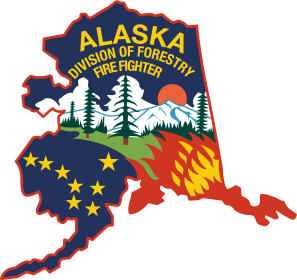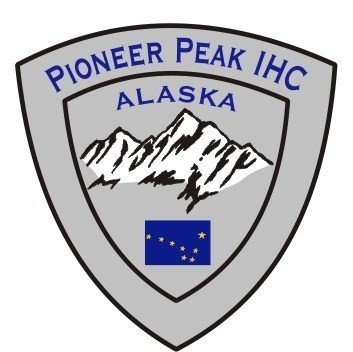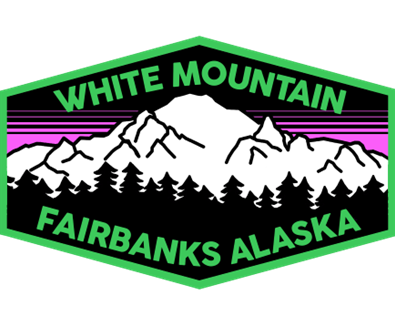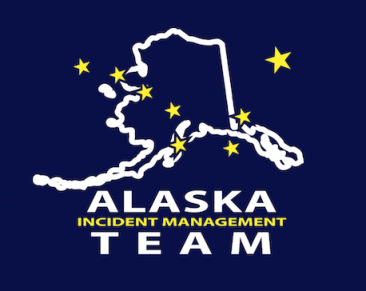Seasonal employees are the backbone of Alaska’s fire suppression program, allowing the Division of Forestry & Fire Protection to expand in number during the fire season when conditions and fire activity warrant. The men and women who make up the workforce are highly trained, physically fit, and effective in all conditions and on all terrain. Seasoned firefighters have an extensive knowledge of fire behavior, suppression operations, remote logistics, and incident management. When not needed in Alaska, individuals and crews may provide support to the national and international firefighting community.
Job Opportunities
The Division of Forestry & Fire Protection posts all of our job openings in one easy to view place, on our CURRENT JOB VACANCIES page. Postings for all state jobs can be found directly on Workplace Alaska. Questions about Workplace Alaska can be answered at 1-800-587-0430. A person interested in employment should build an applicant profile in order to be ready to submit an application when an opening occurs.
Wildland Fire and Resource Technicians

The Division of Forestry & Fire Protection has seasonal Wildland Fire and Resource technicians stationed at seven Area offices spread around the state – Fairbanks, the Mat-Su Valley, Kenai Peninsula, Delta, Tok, Glennallen and McGrath. These seasonal technicians are trained wildland firefighters and serve as single resources that staff engine and helitack crews. They are the primary initial attack responders for wildland urban interface fires. Wildland Fire and Resource Technicians also coordinate fire prevention programs, work on fuels mitigation projects and conduct prescribed burns.
Division of Forestry & Fire Protection Agency Fire Crews
The Alaska Division of Forestry & Fire Protection is proud to serve as home to three elite firefighting crews – the Pioneer Peak Interagency Hotshot Crew (IHC), the Gannett Glacier Type 2 Initial Attack Crew and the White Mountain Type 2 Initial Attack Crew. These crews play a key role in initial attack response, building fireline, performing burnout and suppression operations and mopping up when fires are extinguished. When quickly mobilized, crews can help slow a fires’ growth before it becomes larger, more complex and increasingly expensive. The three DOF crews are national and international resources, working in Alaska, the Lower 48 and in Canada. Positions on DOF crews are open nationwide with preference to Alaska residents. Crew members are State of Alaska employees and positions can be found on our CURRENT JOB VACANCIES page in December, January and February. Crew positions are posted as Wildland Fire & Resource Technician I, II and III.
Pioneer Peak Interagency Hotshot Crew

The Pioneer Peak Hotshots are one of three elite hotshot crews in Alaska and one of more than 100 interagency hotshot crews in the United States. The Pioneer Peak IHC is based in Palmer, Alaska, about 35 miles north of Anchorage. You can find out more about the Pioneer Peak Interagency Hotshot Crew and possible job openings at their website: http://www.pioneerpeakihc.com or by contacting Kris Baumgartner at (907) 841-9716 / kris.baumgartner@alaska.gov.
Gannett Glacier Type 2 Initial Attack Crew
The Gannett Glacier Type 2 Initial Attack Crew is located on the same campus that houses the Pioneer Peak Interagency Hotshot Crew in Palmer. You can find out more about the Gannett Glacier Fire Crew and possible job openings at their website: http://gannettglacier.com/ or by contacting Brian Carver, brian.carver@alaska.gov.

White Mountain Type 2 Initial Attack Crew

The White Mountain Type 2 Initial Attack Crew was established in 2009 and is based at the Alaska Division of Forestry & Fire Protection compound in Fairbanks. You can find out more about the White Mountain Fire Crew and possible job openings by contacting Madeline Handley at 907-687-9253 / madeline.handley@alaska.gov.
Type 2 EFF Crews
The Alaska Division of Forestry & Fire Protection sponsors Type 2 Emergency Firefighting Crews spread across the state. During periods of high fire danger and/or activity, the Alaska Division of Forestry & Fire Protection supplements its staff levels through the Emergency Firefighter (EFF) Program. Emergency and initial attack firefighters are hired on an as-needed, short-term basis, and utilized to augment the permanent workforce. This program provides temporary employment and experience to individuals willing to be available "on-call" while the need exists. The Division of Forestry & Fire Protection conducts training each spring for EFF crews. Emergency firefighters must be at least 18 years of age, have successfully completed initial and recurrent firefighter training, as well as an annual physical fitness test, prior to employment. If you are interested in employment as an emergency firefighter, contact the nearest Alaska Division of Forestry & Fire Protection Area/Dispatch office listed below:
- Delta Junction: 895-4225
- Fairbanks: 451-2635 or 451-2651
- Kenai-Kodiak (Soldotna): 260-4200
- Mat-Su (Palmer): 761- 6300
- Southwest (McGrath): 524-3010
- Tok: 883-1400
- Valdez/Copper River (Glennallen): 822-5534
Support Positions
In addition to firefighters, the Division of Forestry & Fire Protection hires temporary non-firefighter positions to support suppression activities when DOF is faced with a high wildland fire workload. These positions include, but are not limited to:
- Dispatchers
- Drivers
- Expediters
- Warehouse workers
- Clerical
If you are interested in this type of work, contact the Alaska State Employment Service (Job Service) Office in your community. Each DOF office works closely with the State Employment Service if and when they have casual labor needs. You may also fill out an Emergency Firefighter (EFF) Application to be on file at your nearest DOF office for use in extreme emergency situations.
Interagency Resources
The Division shares resources and relies on resources within the Alaska interagency firefighting community. Through cooperative agreements with multiple federal agencies such as the Bureau of Indian Affairs, BLM-Alaska Fire Service, National Park Service, U.S. Forest Service and U.S. Fish and Wildlife Service, personnel, aircraft, and other equipment are shared amongst the agencies. The Division and its interagency Alaska cooperators at times also rely on firefighting support from the national firefighting community, and Canada, through the Northwest Compact.
Alaska Incident Management Teams

Alaska is home to multiple Incident Management Teams, including the Alaska Type 1 IMT. The Alaska Type 1 IMT not only provides support to Alaska, but also is part of a national rotation for response to all-hazard incidents. There are 16 national "Type 1" Incident Management Teams (IMT's) available for assignment to manage large-scale, complex incidents anywhere in the United States. These incidents usually involve large wildfires, but Type 1 teams can be assigned to any complex all-risk situation which could include hurricanes, floods and other disasters. Several Type 1 teams, including the Alaska Type 1 IMT, were assigned to assist FEMA after the September 11th attack, the shuttle recovery effort and Hurricane Katrina. Consisting of approximately 50 overhead personnel, Alaska Incident Management Team members have expertise in finance, logistics, operations, information, safety, and planning, and are drawn from many local, state, and federal agencies throughout Alaska and the Lower 48 states. The Alaska Team is committed to conducting operations in a safe and cost effective manner while maintaining an environment of respect for all people assigned to or affected by the incident.
